Seoul, Republic of Korea
South Korea has four distinct seasons, each resplendently colouring the landscape. During the spring, an abundance of forsythias, azaleas, cherry blossoms and various other flowers can be seen. In the summer, many take a trip to the coast for some summer fun. During the autumn, the mountain is crimson washed, while the city is covered in a blanket of snow in winter.

Korea’s economy is well developed through the export of goods such as cars, ships, mobile phones, computers, tvs and other electronic devices globally. In 2012, Korea was ranked as the 15th strongest economy in today’s world with a GDP of $1.6 trillion USD*. Korea also has a thriving theatre and movie industry, mainly due to the recent growth in popularity of Korean pop culture.
Korea has a population of just over 51 million**, with the majority residing in high rise districts. In an attempt to spread the population out across Seoul, the Korean government has moved some of its buildings and offices out of the city.
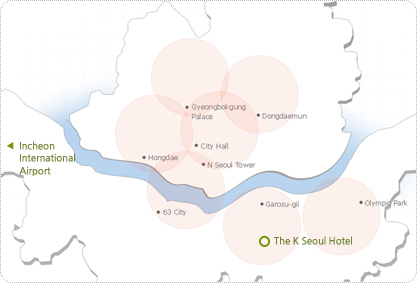 Derived from the Korean for ‘capital city’, Seoul, the largest city in Korea and one of the largest in the world was established in 1946 in light of Korea’s independence. Seoul is surrounded by mountains with the Hangang River dividing the city into North and South. Seoul has much to offer tourists, as a rich traditional city with a thousand years of history including fine art, music, literature, architecture, handicrafts and food mixed with modern themes, most predominantly, technology.
Derived from the Korean for ‘capital city’, Seoul, the largest city in Korea and one of the largest in the world was established in 1946 in light of Korea’s independence. Seoul is surrounded by mountains with the Hangang River dividing the city into North and South. Seoul has much to offer tourists, as a rich traditional city with a thousand years of history including fine art, music, literature, architecture, handicrafts and food mixed with modern themes, most predominantly, technology.
Each year, a growing number of tourists discover the exciting and diverse attractions of Korea with more than 6 million visitors in 2010. Korea has something to offer everyone, whether you are a nature lover, a ‘foodie’, a history and culture buff, enjoy outdoor pursuits like mountain climbing or a ‘techie’, Korea has something for you.
Explore Wonderful Korea
# Changdeokgung Palace and Huwon
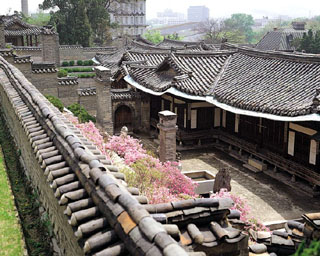 Changdeokgung Palace is the second royal villa built after Gyeongbukgung Palace in 1405. Chandeokgung served as the principal palace by many Joseon kings an remains the best preserved among the five royal Joseon palaces. The rear garden that was used as a place of rest by the kings boasts a gigantic tree that is over 300 years old, a small pond, and a pavilion. The palace grounds are comprised of a public palace area, a royal family residence building, and the rear garden.
Changdeokgung Palace is the second royal villa built after Gyeongbukgung Palace in 1405. Chandeokgung served as the principal palace by many Joseon kings an remains the best preserved among the five royal Joseon palaces. The rear garden that was used as a place of rest by the kings boasts a gigantic tree that is over 300 years old, a small pond, and a pavilion. The palace grounds are comprised of a public palace area, a royal family residence building, and the rear garden.
The palace served as the main building after the 9th king of Joseoun, Seongjong, when a number of kings used this palace as a place of dwelling. However, the palace was burned down during the time of the Japanese Invasion of Korea in 1592. Angry citizens set fire to the palace when it was evacuated during the time of invasion. Thanks to Gwanghaegun, the palace was later restored in 1611, where nature and art now flourishes, quite a sight to see for tourists. The palace is filled with cultural assets such as Injeongjeon Hall, Daejojeong Hall, Seonjeongjeon Hall and Nakseonjae to visit.
The World Cultural Heritage Committee also designated Changdeokgung Palace as a World Cultural Heritage in December of 1997 in Napoli, Italy.
Changdeokgung’s rear garden was constructed during the reign of Taejong, and had served as a resting area for the royal family members. The garden was also called Bukwon and Geumwon, but after Kojong became king, he renamed it Biwon. The garden was kept as natural as possible and human hands were only used when absolutely necessary. Buyongjeong, Buyongji, Juhabru, Eosumun, Yeonghwadang, Bullomun, Aeryeonjeong, and Yeongyeongdang are some of the many pavilions and fountains that occupy the gardens. The most beautiful time to see the garden is during the fall when the autumn foliage is at its fullest peak and the leaves start to fall.
| Address | Seoul, Jongno-gu, 2-71 Waryong-dong |
| Type | Palaces / Fortresses / Gates |
| Inquiries | - Travel Phone +82-2-1330 (Korean, English, Japanese, Chinese) - +82-2-762-9513 (Korean) |
| Homepage | http://www.cdg.go.kr/main/main.htm (English, Korean) |
| Closed | Every Monday |
| Operating Hours | 1.Touring with a guide(takes 1 hour and 20 minutes) 2.Non-guided Tour will be available from June 15 2006 every Thursday.(costs 15,000 won). |
| Admission Fees | Age 19 and over: 3,000 won / Ages 7 to 18: 1,500 won / Age 7 or under are free / Non-guided Tour on every Thursday: 15,000 wonFee : 15,000 Won Etc : Voive guiding machines will be offered for free on the non-guided tour days. You need to show your identification if you borrow it. |
| Non-guided Tour Information | April 12, 2007 ~ November 30, 2007(Every Thursday) |
| Local Transportation |
- From Exit No. 3 of Anguk Subway Station (Seoul Subway Line No. 3), walk toward Biwon for 2 minutes. - From Exit No. 6 of Jongno 3(sam)-ga Subway Station (Seoul Subway Line No. 1 & 5), walk 10 minutes passing by Nakwon Store. |
# Insadong
Insadong and the surrounding area were the residences of Joseon Dynasty (1392-1910) officials, extended royal families, and the yangbanaristocratic class.
The antique art shops that were established here during the Japanese Colonial Period carried everyday items of the privileged class as these items became antiques in the face of modernity.
Since then, Insadong has been home to dozens of art galleries and antique shops. Insadong’s narrow alleys branch out into all directions from one main street.
To explore the interesting places on these side alleys, it would be helpful to get a map of Insadong at one of three Tourism Information Centers that are located at the center and the two ends of the main street.
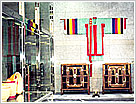 Antiques
Antiques
41% of Korea’s antique shops. These shops display and sell quality antiques such as old paintings, ceramics, woodenware, metalware, old furniture and many other items. Among them, ceramics are found abundantly. Numerous antique shops are renowned for specific merchandise: Tongmungwan for old documents, Haedonggodoja Research Institute for ceramics, Godosa for daily utensils of the past, Dongmundang and Gonghwarang for calligraphy supplies, and Naraksil and Gayajae are famous for old furniture.
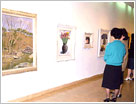 Art Galleries
Art Galleries
Art galleries began to settle in Insadong from the 1970′s and presently account for more than 70 shops. Galleries in Insadong display and sell modern art pieces as well as antiques. The price of artworks range from a few U.S. dollars to ten thousand U.S. dollars. Exhibitions are held frequently in these galleries and give good chances for Korean artists to gather. Insa Art Center and Gyeongin Art Gallery are famous in Insadong.
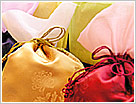 Hanbok Korean Traditional Clothes, Ceramics, Handicrafts and Souvenirs
Hanbok Korean Traditional Clothes, Ceramics, Handicrafts and Souvenirs
Most hanbok shops in Insadong sell a simplified version of hanbok. hanbok usually costs about two hundred U.S. dollars, but the price of high-quality hanbok could go up to a few thousand U.S. dollars. Jilgyeongyi Wuriot is a famous hanbok shop. Ceramics is another popular shopping item in Insadong. Good quality ceramics have a clean color and make a pure sound when tapping it with a finger.
Bakyeongsukyo is a prominent ceramics shop which even was visited by Queen Elizabeth of England. If hanbok or ceramics are too expensive, traditional-style daily items might be a good option. Wuri Segye, Sori Hana, and Tongin Gagye are good shops to get souvenirs such as silk pouches, oriental fans or mobile phone strings. Gana Art Shop inside of Insa Art Center offers traditional high quality items. Awon Gongbang is a good shop for metal crafted products and the National Souvenir Center and Seoul Souvenir Shop are specialized souvenir shops in Insadong.
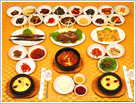 Food and Drink
Food and Drink
Most restaurants in Insadong are on alleys near Sudo Pharmacy. (Please refer to the map of Insadong.) Traditional restaurants in Insadong serve Korean dishes cooked without synthetic seasonings in remodeled traditional Korean houses. Sanchon serves good temple food along with a traditional performance. The Restaurant Jirisan Restaurant is famous for delicious dishes that taste of Korean home cooking. Sadongmyeonok is renowned for manduguk dumpling soup, Insadong Hangari Sujebi is recognized for sujebi clear soup with wheat flakes, and Gaetmaeul Milbatjip is celebrated for kalguksu noodle soup. Yetchatjip, Gwicheon, and Jeontong Dawon located inside of Gyeongin Art Gallery are popular traditional teahouses. A fun experience in Insadong is to try hotteok Chinese stuffed pancake or ggultarae from a street vendor.
Would you like to enjoy Seoul?
To get more information, Please refer to www.VisitSeoul.net or Explore Wonderful Korea.





